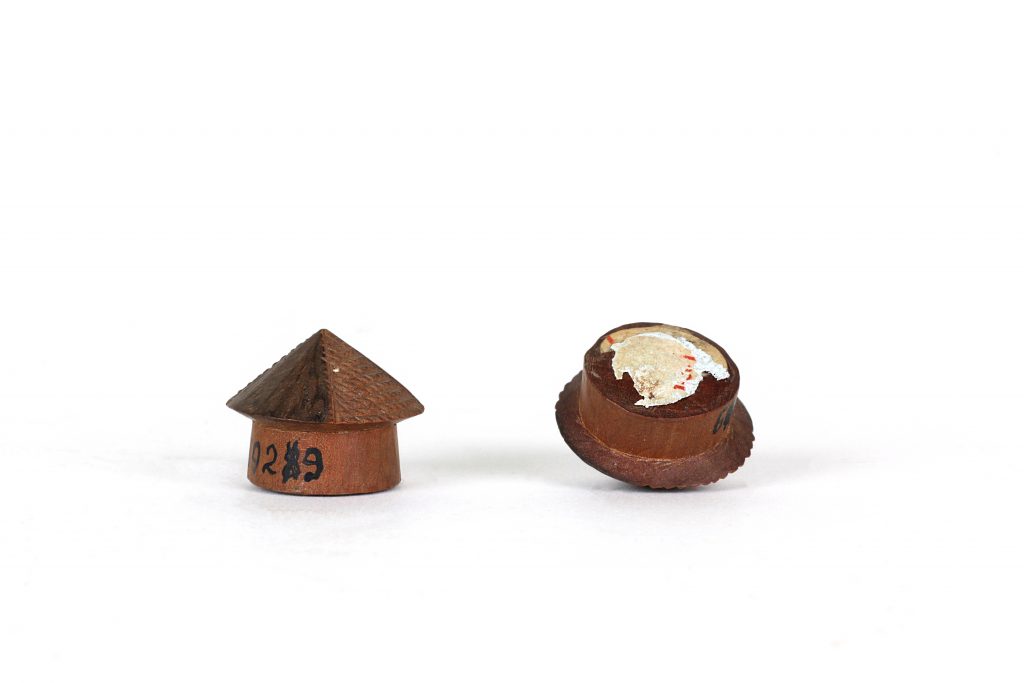
Listen to the pronunciation
| What is this? | Ear-plug |
| isiZulu Name | Iziqhaza (the pair) Isiqhaza (one ear-plug) |
| isiXhosa Name | Not yet documented. |
| English Name | Ear-plug |
| Which cultural group created this? | Zulu |
| Who made this? | Not yet documented. |
| When was it made? | Not yet documented. |
| Where was it made? | Probably KwaZulu-Natal |
| Measurements | Not yet documented. |
| How was it made and what is it made of? | Carved out of wood and incised with cross-hatched motif. One piece. |
| What colour is it? | Cylindrical part: light brown Conical part: dark brown |
| What sound does it make? | Not yet documented. |
| Physical description | Ear-plug carved out of wood. Lower, cylindrical part is smooth and presents numbers written with black pen. Top part is conical, divided into four triangles which are decorated alternatively, two are incised with cross-hatched motifs and two smooth. Bottom area presents residue from being glued (?). |
| Where is it now? | Iziko Museum, Cape Town, South Africa Museum ID: 5929 |
| How did it get there? | J. Wickson Collection, Accession Year 1938 |
| Why is it important? | Pair of ear-plugs (iziqhaza). According to the Zulu tradition, ear piercing is done at the age between five and six. Each family has an earplug design, so everyone can identify which family one is from. The head of the family used to inform the household when it was time for the younger children to get their ears pierced. Before piercing the children’s ears, the head of the family would slaughter a goat, informing the ancestors that he would spill blood and ear pierce the kids (if you spill blood in the household, the ancestors must be aware of why it is happening). Both young girls and boys were ear-pierced. After being pierced, the ear-plugs were pushed through the hole so the ear loops would look wider and bigger. There were different sizes of ear-plugs. Most men used the smaller ones and the women the bigger ones. Nowadays, young ones are taken to the salons, where professionals pierced their ears, resulting in the loss of culture and identity. It is not performed according to the Zulu custom or the tradition of iqhaza. The ear-piercing in isiZulu is called ukuklekla because they cut your ear loops, and they put the ear-plugs in it. isiqhaza is also an insult in isiZulu. |
| Notes | Not yet. |
| References | Amagugu Ethu Workshop, Recording STE021, min. 25:33 to 29:29: Wilfred Mchunu and Thulisiwe Mtshali |
| Who described this? | Described during the Amagugu Ethu Workshop by Wilfred Mchunu and Thulisiwe Mtshali. Described for the website by Clara Giménez-Delgado (August 18, 2020). |